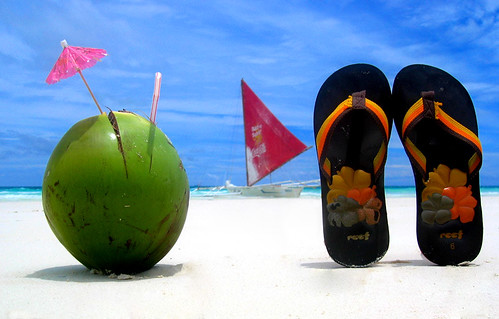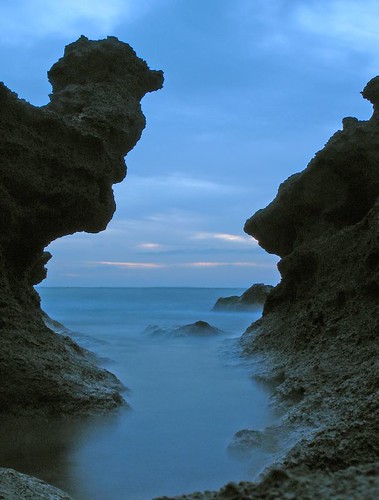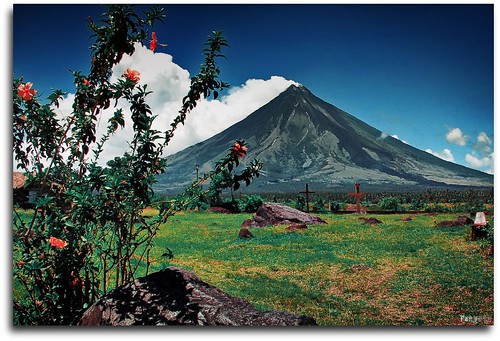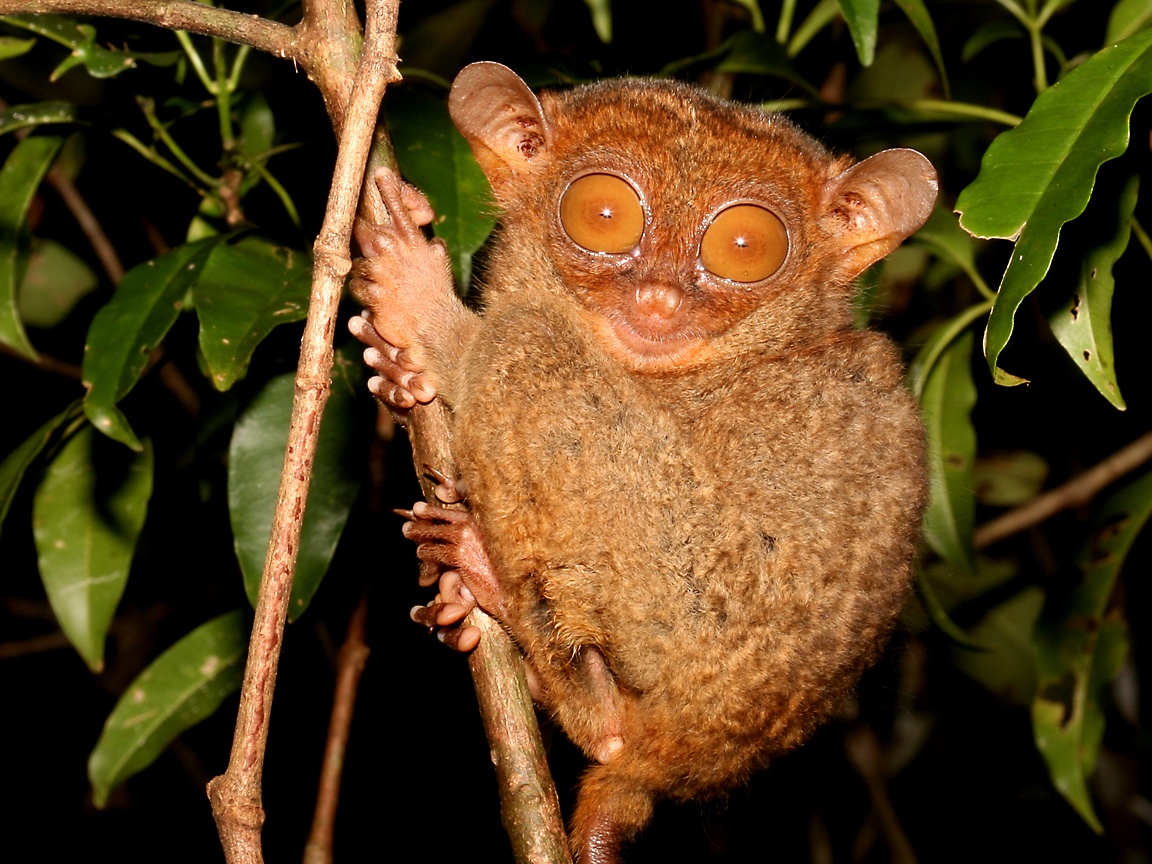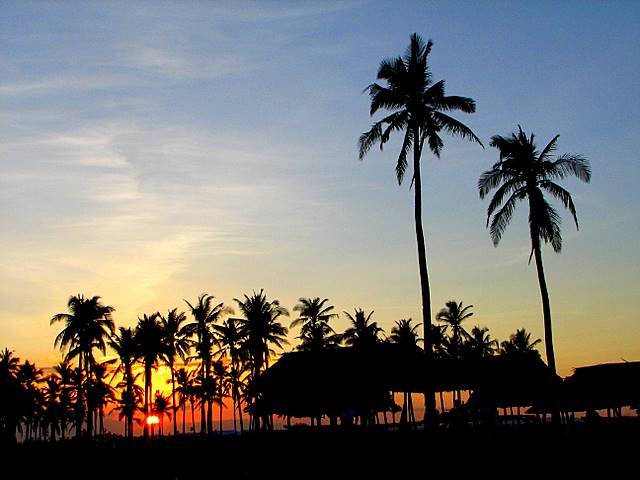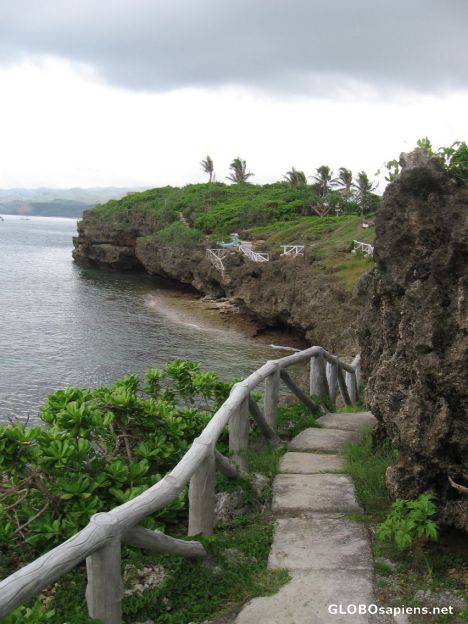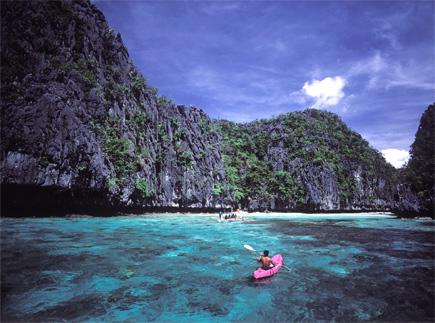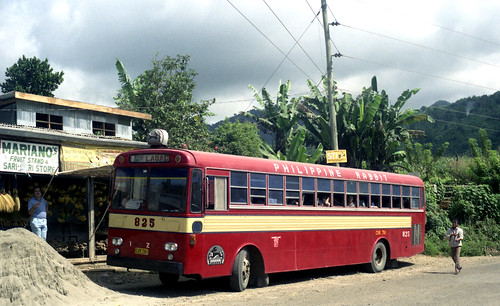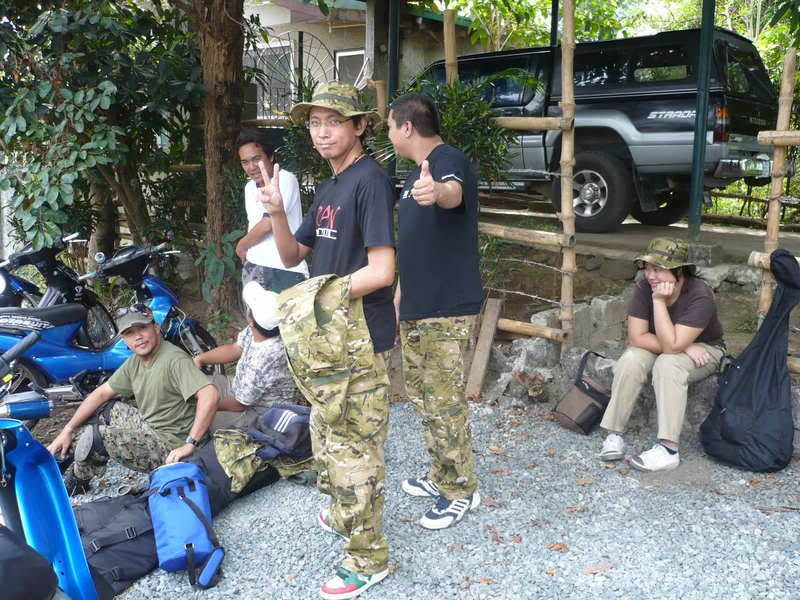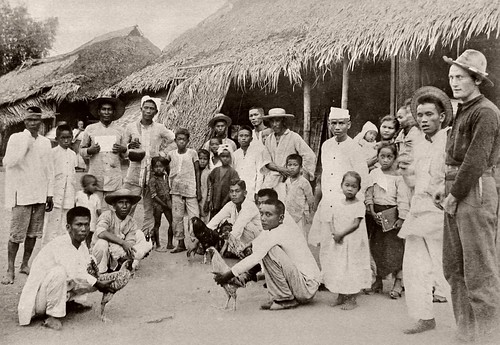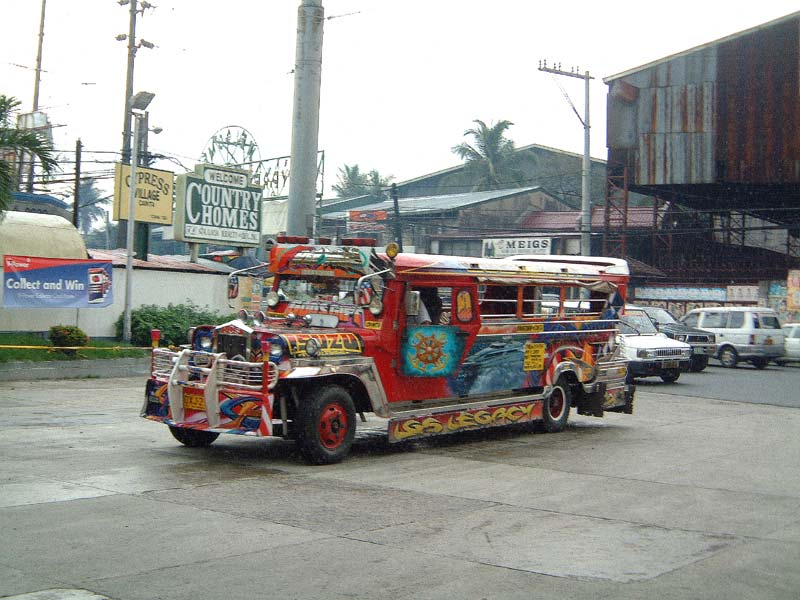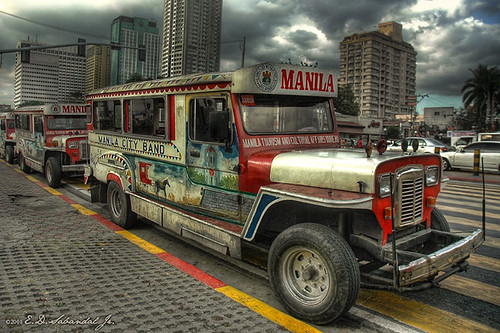
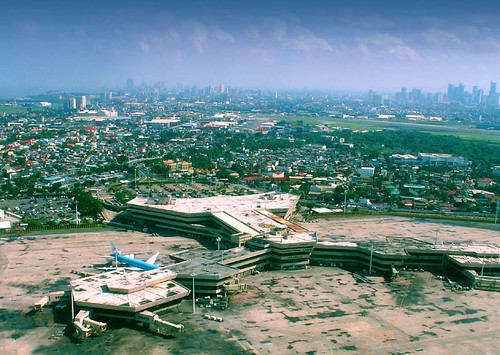


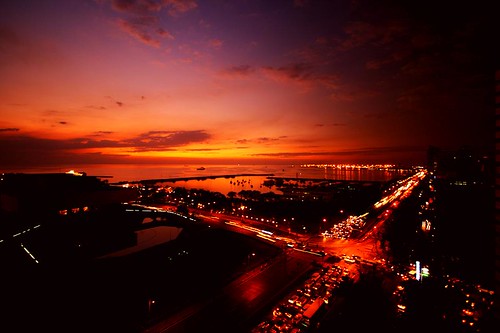
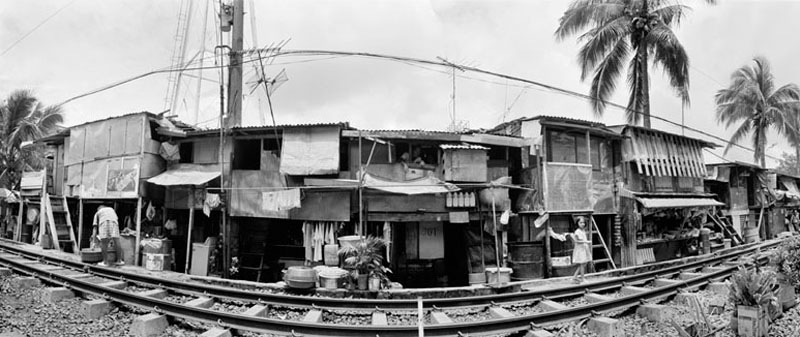
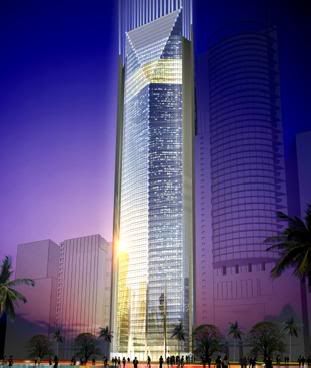
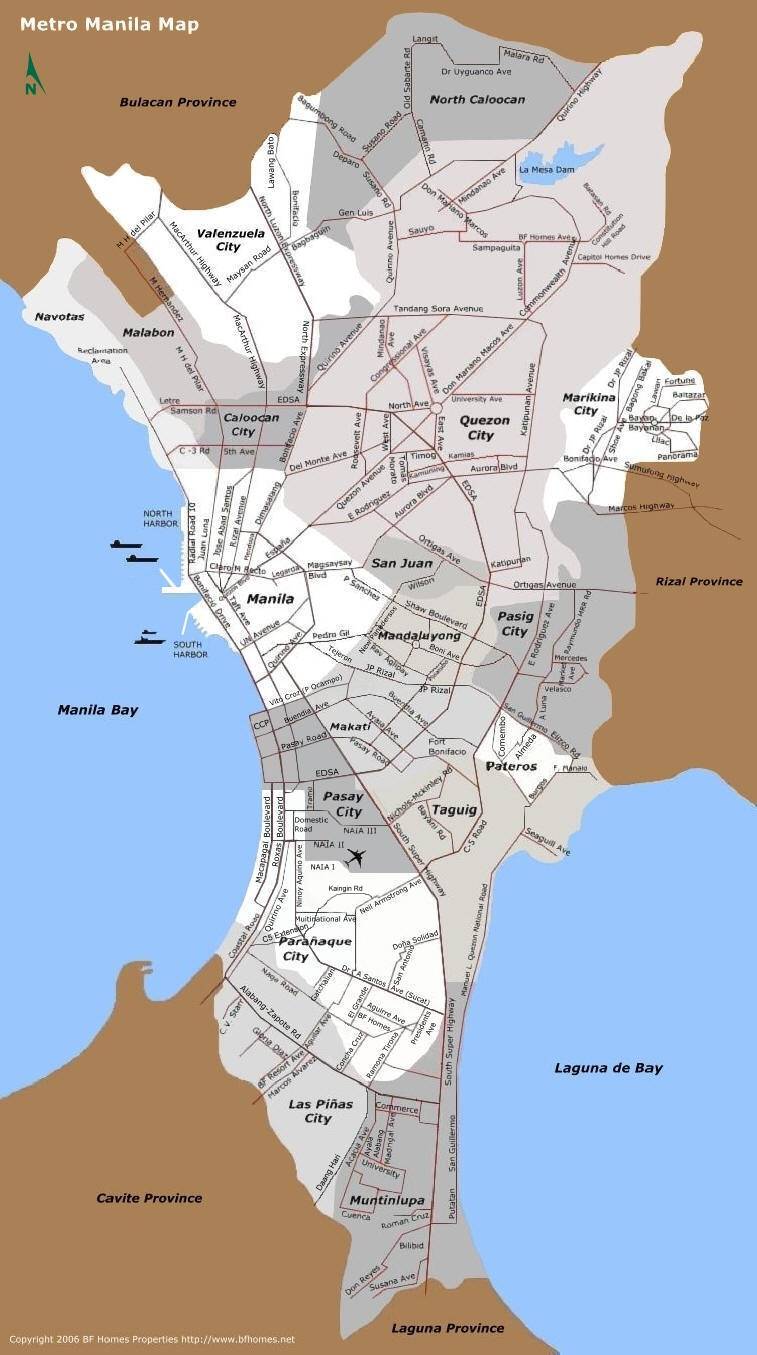

The capital of the Philippines, a grouping of six cities and eighteen municipalities, is technically known as Metro Manila but usually referred to simply as MANILA, home to 10 million people. Manila will never be a serious tourist destination until the authorities deal with the evils of traffic and pollution; most tourists are in the capital because they have a day or two to kill either at the beginning or the end of a trip to the rest of the country. In its favour, Manila has friendly people, some excellent nightlife, a few historical sights that are worth the effort, plus some of the most cavernous shopping malls in Asia. At first sight, the city may seem clamorous, unkempt and rough around the edges, but what it lacks in architectural sophistication it makes up for with an accessible chaotic charm. The way to enjoy it is to step into the fray and go with the flow, which is exactly what Manileños have learned to do.
Manila started life as a tiny settlement around the banks of the Pasig River. The name comes from the words may ("there is") and nilad (a type of plant that grew near the Pasig). With Spanish colonization, it grew into an important port. King Philip II of Spain called Manila "Insigne y Siempre Leal Ciudad" ("Distinguished and Ever Loyal City"). Images of the city in the eighteenth century show grand merchants' houses and schooners moored in the Pasig. The area around Binondo, later to become Chinatown, was alive with mercantile activity. Nineteenth-century travellers arriving in Manila were enchanted. Manila's population was 150,000 and there had been one murder in five years.
But this Manila was a doomed city. At 7pm on June 3, 1863, an earthquake struck and Manila crumbled. The new Manila that grew in its stead was thoroughly modern, with streetcars, steam trains and American-style public architecture. This was one of the most elegant and cosmopolitan cities in the Orient, but when the smoke cleared at the end of Japanese occupation in March 1945, it was once again in ruins, having undergone relentless shelling from American howitzers and been set alight by retreating Japanese troops. The Battle of Manila lasted 29 days and claimed 100,000 civilian lives. Rebuilding was slow and plagued by corruption and government inertia. As a consequence, the city that greets visitors today is one of emotional counterpoints, with areas of extreme poverty encroaching on frothy mansions and soaring glass skyscrapers.
In the days of the Spanish Empire, Manila was Spain’s seat of power in Asia and the Pacific. Today, the city and its people are a mish-mash of the East and West. A string of harsh invasions (Spain, USA, Japan) and a history of hardships molded Filipinos into resilient, good-humored and resourceful people, traits that can be seen in their everyday life.
The friendliness of Filipinos translates to good customer service in hotels, businesses and malls. Most residents speak English, so navigating the city is not a big problem. These, plus the added purchasing value of the foreign exchange rate, make Manila a great place for guests looking for luxury, pampering and bargains.
‘Manila’ really refers to two places: the City of Manila, founded by Spanish conquerors in 1571 by the side of Manila Bay, and the larger Metropolitan Manila (abbreviated to Metro Manila), which encompasses the City of Manila and 17 other cities. Filipinos use ‘Manila’ to mean Metro Manila, while the term Manileño is reserved exclusively for the City of Manila’s residents.
Manila’s history is intertwined with its geographic location. Manila Bay was an ideal port for Spanish ships bearing gold, spices, silk and ceramics (treasure hunters still seek sunken Manila galleons today). Unfortunately for Manileños, this also attracted a string of invaders.
Spain first conquered Manila in 1571. For 300 years, Spain successfully repelled a series of invasion attempts by the Chinese, Dutch and the British. A Filipino revolutionary force triumphed over the Spanish in 1896. But this was shortlived as the USA took over Manila in 1898. The city finally got its independence after WWII.
The city is mostly warm and humid, with an average temperature of 27°C (81°F). It gets cooler in the months of December to February (down to around 21°C/70°F), and warmer to hot during March to May (up to around 34°C/93°F). The rainy season used to be in June to September, but this has shifted towards September to October, with typhoons often arriving during these months.
Manila has many facets to satisfy different tastes. History buffs will enjoy the rich heritage of the old Manila city. The Spanish influence is still evident in the old quarters of the city and in local traditions.
Most Filipinos are Catholic and Manila has numerous old churches, some dating back 300 years. An exhibit at the National Museum displays sunken treasure from one of the Manila galleons dating back 1600, discovered by divers only in 1991.
Food lovers can feast on the diversity of local cuisine, which incorporates the good stuff from Spanish, Indian and Chinese cooking. For the politically inclined, Metro Manila is the site of the EDSA Revolution, where citizens marched on the streets, notably in EDSA, to end the reign of dictator Ferdinand Marcos and his well-shod wife, Imelda. People Power Revolution, as it was later called around the world, inspired several other non-violent marches in Nicaragua, Berlin and the former Soviet Union.
Shopaholics will love the malls easily accessible within the metropolis.
Recommended destinations in City of Manila are Intramuros and Fort Santiago (the old Spanish settlement), Santa Cruz (notably Chinatown) and Malate (for its bars), the National Museum and the Cultural Center of the Philippines. For a quick, visual brush-up on Philippine history, the dioramas at the Ayala Museum are highly recommended.
Tourist Information Philippine Tourism Authority (DOT) Fifth Floor, DOT Building TM Kalaw Street Teodoro Valencia Circle Tel: (02) 524 2502. Website: www.tourism.gov.ph Opening hours: Daily 0700-1800.
A substantial open green area that showcases Manila at play, 58-hectare (143-acre) Rizal Park is one of the largest parks in South-East Asia. It is also known as Luneta, after the area it replaced. Its local significance can be gauged by the fact that it is named after Dr José Rizal, the great Philippine anti-colonial fighter and thinker. He is memorialised in the Diorama of the Martyrdom of Dr José Rizal, which becomes a son et lumière exhibit after sunset, and his remains were interred in the Rizal Monument in 1912. The many ornamental gardens include a re-creation of the entire Philippines archipelago in the eastern ponds. There is also a Japanese Garden, a Chinese Garden, an Orchidarium, a chess plaza and a skating rink. The museums and public buildings within its precincts include the Museum of the Pilipino People (see below). In the morning, residents assemble to practice tai chi, Philippine stick-fighting or sundry forms of martial arts, while on most Sundays, there is a free ‘Concert at the Park’ in an open-air auditorium.
Taft Avenue to Manila Bay
The original city, founded in 1571 by the Spanish, Intramuros is located on the southern bank of the Pasig River. Substantial sections of the encircling wall, which was begun in 1590, remain, including a number of decorated gates. In fact a poorly defensible site, Intramuros was the location of most major conflicts and invasions to befall the pre-independence Philippines, culminating in the devastating Battle for Manila between the Japanese and Americans in 1945, in which over 100,000 locals died. The surviving walls have been restored and many attractive historic buildings still remain within their precincts, while a walk beneath their ramparts gives a colonial experience hard to match in modern Asia.
Free admission.
One of the oldest and most dramatic colonial buildings in the Philippines, Fort Santiago was built to guard the entrance to the Pasig River and dates back, in its oldest sections, to 1571. Its most famous prisoner was the national hero, José Rizal, who spent his last days here before his death at the hands of the Spanish in 1896. More recent memories of tyranny include the legacy of wartime Japanese occupation, when Philippine freedom fighters suffered and died here. In another cell block, American POWs were left to be drowned by the rising tide - this was one of the rumoured resting places for the legendary wartime trove of Yamashita’s Gold and the victims’ last resting place has been much disturbed by treasure seekers. The Japanese used Fort Santiago as their final redoubt against American forces and the fort was correspondingly damaged. It has been rebuilt as a park, with its own resident theater company. At its heart is the Rizal Shrine, which contains very crypto-Catholic relics of the hero - one of his vertebrae, the first draft of his novel Noli Me Tangere or Touch Me Not (1887) and the original of his death poem.
Entrance at end of General Luna Street, Intramuros
Tel: (02) 527 2889.
Admission charge.
General Luna Street, Intramuros
Tel: (02) 527 4061.
Admission charge.
The National Museum has many archaeological exhibits of the Philippines’ prehistory, including the skull of ‘Tabon Man’, the oldest human remains in the archipelago. The Museum of the Filipino People collection includes the preserved timbers and treasures of the San Diego, a Spanish galleon that sank in Philippine waters after a collision in 1600. Also visit the Juan Luna collection of paintings. Luna was a Filipino master painter known for Spoliarium, an awe-inspiring painting depicting dead Roman gladiators being dragged away after the famed games. Luna won several major awards in his time, beating painters from all over the world.
Padre Burgos Street, Rizal Park
Tel: (02) 527 1215.
Website: http://nmuseum.tripod.com
Free admission to the National Museum; admission charge for the Museum of the Filipino People.
Gate Six, JP Laurel Street, San Miguel
Tel: (02) 733 3721.
Admission charge.
South Gate on Aurora Avenue, Blumentritt
Free admission.
Greenbelt, Makati Avenue, Makati City
Tel: (02) 757 7117-21.
Website: www.ayalamuseum.org
Admission charge.
Ground floor, Benpres Building, Exchange Road, corner of Meralco Avenue, Ortigas Center, Pasig City
Tel: (02) 631 2417.
Website: www.lopezmuseum.org.ph
Admission charge.
SV Carina
Departures from Rizal Park
Admission charge.








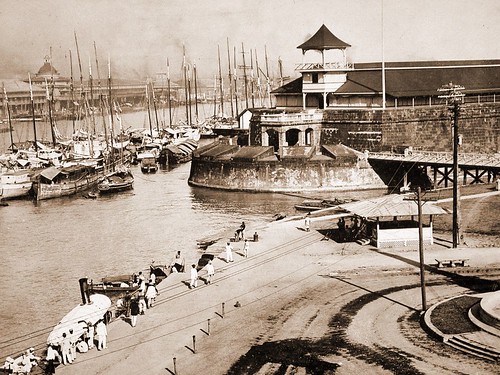
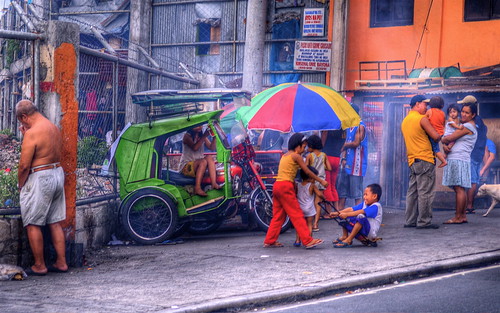

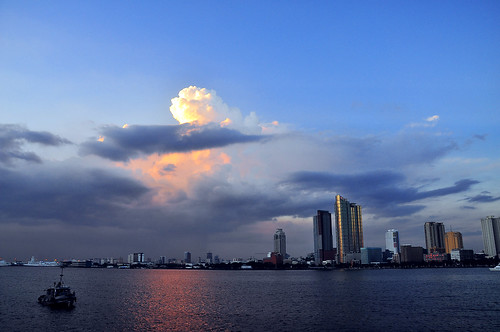


Manila started life as a tiny settlement around the banks of the Pasig River. The name comes from the words may ("there is") and nilad (a type of plant that grew near the Pasig). With Spanish colonization, it grew into an important port. King Philip II of Spain called Manila "Insigne y Siempre Leal Ciudad" ("Distinguished and Ever Loyal City"). Images of the city in the eighteenth century show grand merchants' houses and schooners moored in the Pasig. The area around Binondo, later to become Chinatown, was alive with mercantile activity. Nineteenth-century travellers arriving in Manila were enchanted. Manila's population was 150,000 and there had been one murder in five years.
But this Manila was a doomed city. At 7pm on June 3, 1863, an earthquake struck and Manila crumbled. The new Manila that grew in its stead was thoroughly modern, with streetcars, steam trains and American-style public architecture. This was one of the most elegant and cosmopolitan cities in the Orient, but when the smoke cleared at the end of Japanese occupation in March 1945, it was once again in ruins, having undergone relentless shelling from American howitzers and been set alight by retreating Japanese troops. The Battle of Manila lasted 29 days and claimed 100,000 civilian lives. Rebuilding was slow and plagued by corruption and government inertia. As a consequence, the city that greets visitors today is one of emotional counterpoints, with areas of extreme poverty encroaching on frothy mansions and soaring glass skyscrapers.
In the days of the Spanish Empire, Manila was Spain’s seat of power in Asia and the Pacific. Today, the city and its people are a mish-mash of the East and West. A string of harsh invasions (Spain, USA, Japan) and a history of hardships molded Filipinos into resilient, good-humored and resourceful people, traits that can be seen in their everyday life.
The friendliness of Filipinos translates to good customer service in hotels, businesses and malls. Most residents speak English, so navigating the city is not a big problem. These, plus the added purchasing value of the foreign exchange rate, make Manila a great place for guests looking for luxury, pampering and bargains.
‘Manila’ really refers to two places: the City of Manila, founded by Spanish conquerors in 1571 by the side of Manila Bay, and the larger Metropolitan Manila (abbreviated to Metro Manila), which encompasses the City of Manila and 17 other cities. Filipinos use ‘Manila’ to mean Metro Manila, while the term Manileño is reserved exclusively for the City of Manila’s residents.
Manila’s history is intertwined with its geographic location. Manila Bay was an ideal port for Spanish ships bearing gold, spices, silk and ceramics (treasure hunters still seek sunken Manila galleons today). Unfortunately for Manileños, this also attracted a string of invaders.
Spain first conquered Manila in 1571. For 300 years, Spain successfully repelled a series of invasion attempts by the Chinese, Dutch and the British. A Filipino revolutionary force triumphed over the Spanish in 1896. But this was shortlived as the USA took over Manila in 1898. The city finally got its independence after WWII.
The city is mostly warm and humid, with an average temperature of 27°C (81°F). It gets cooler in the months of December to February (down to around 21°C/70°F), and warmer to hot during March to May (up to around 34°C/93°F). The rainy season used to be in June to September, but this has shifted towards September to October, with typhoons often arriving during these months.
Sightseeing Overview
Manila has many facets to satisfy different tastes. History buffs will enjoy the rich heritage of the old Manila city. The Spanish influence is still evident in the old quarters of the city and in local traditions.
Most Filipinos are Catholic and Manila has numerous old churches, some dating back 300 years. An exhibit at the National Museum displays sunken treasure from one of the Manila galleons dating back 1600, discovered by divers only in 1991.
Food lovers can feast on the diversity of local cuisine, which incorporates the good stuff from Spanish, Indian and Chinese cooking. For the politically inclined, Metro Manila is the site of the EDSA Revolution, where citizens marched on the streets, notably in EDSA, to end the reign of dictator Ferdinand Marcos and his well-shod wife, Imelda. People Power Revolution, as it was later called around the world, inspired several other non-violent marches in Nicaragua, Berlin and the former Soviet Union.
Shopaholics will love the malls easily accessible within the metropolis.
Recommended destinations in City of Manila are Intramuros and Fort Santiago (the old Spanish settlement), Santa Cruz (notably Chinatown) and Malate (for its bars), the National Museum and the Cultural Center of the Philippines. For a quick, visual brush-up on Philippine history, the dioramas at the Ayala Museum are highly recommended.
Tourist Information Philippine Tourism Authority (DOT) Fifth Floor, DOT Building TM Kalaw Street Teodoro Valencia Circle Tel: (02) 524 2502. Website: www.tourism.gov.ph Opening hours: Daily 0700-1800.
Key Attractions:
- Rizal Park
A substantial open green area that showcases Manila at play, 58-hectare (143-acre) Rizal Park is one of the largest parks in South-East Asia. It is also known as Luneta, after the area it replaced. Its local significance can be gauged by the fact that it is named after Dr José Rizal, the great Philippine anti-colonial fighter and thinker. He is memorialised in the Diorama of the Martyrdom of Dr José Rizal, which becomes a son et lumière exhibit after sunset, and his remains were interred in the Rizal Monument in 1912. The many ornamental gardens include a re-creation of the entire Philippines archipelago in the eastern ponds. There is also a Japanese Garden, a Chinese Garden, an Orchidarium, a chess plaza and a skating rink. The museums and public buildings within its precincts include the Museum of the Pilipino People (see below). In the morning, residents assemble to practice tai chi, Philippine stick-fighting or sundry forms of martial arts, while on most Sundays, there is a free ‘Concert at the Park’ in an open-air auditorium.
Taft Avenue to Manila Bay
- Intramuros
The original city, founded in 1571 by the Spanish, Intramuros is located on the southern bank of the Pasig River. Substantial sections of the encircling wall, which was begun in 1590, remain, including a number of decorated gates. In fact a poorly defensible site, Intramuros was the location of most major conflicts and invasions to befall the pre-independence Philippines, culminating in the devastating Battle for Manila between the Japanese and Americans in 1945, in which over 100,000 locals died. The surviving walls have been restored and many attractive historic buildings still remain within their precincts, while a walk beneath their ramparts gives a colonial experience hard to match in modern Asia.
Free admission.
- Fort Santiago
One of the oldest and most dramatic colonial buildings in the Philippines, Fort Santiago was built to guard the entrance to the Pasig River and dates back, in its oldest sections, to 1571. Its most famous prisoner was the national hero, José Rizal, who spent his last days here before his death at the hands of the Spanish in 1896. More recent memories of tyranny include the legacy of wartime Japanese occupation, when Philippine freedom fighters suffered and died here. In another cell block, American POWs were left to be drowned by the rising tide - this was one of the rumoured resting places for the legendary wartime trove of Yamashita’s Gold and the victims’ last resting place has been much disturbed by treasure seekers. The Japanese used Fort Santiago as their final redoubt against American forces and the fort was correspondingly damaged. It has been rebuilt as a park, with its own resident theater company. At its heart is the Rizal Shrine, which contains very crypto-Catholic relics of the hero - one of his vertebrae, the first draft of his novel Noli Me Tangere or Touch Me Not (1887) and the original of his death poem.
Entrance at end of General Luna Street, Intramuros
Tel: (02) 527 2889.
Admission charge.
- San Agustin Church and Museum
General Luna Street, Intramuros
Tel: (02) 527 4061.
Admission charge.
- National Museum of the Philippines
The National Museum has many archaeological exhibits of the Philippines’ prehistory, including the skull of ‘Tabon Man’, the oldest human remains in the archipelago. The Museum of the Filipino People collection includes the preserved timbers and treasures of the San Diego, a Spanish galleon that sank in Philippine waters after a collision in 1600. Also visit the Juan Luna collection of paintings. Luna was a Filipino master painter known for Spoliarium, an awe-inspiring painting depicting dead Roman gladiators being dragged away after the famed games. Luna won several major awards in his time, beating painters from all over the world.
Padre Burgos Street, Rizal Park
Tel: (02) 527 1215.
Website: http://nmuseum.tripod.com
Free admission to the National Museum; admission charge for the Museum of the Filipino People.
- Malacañang Palace and Museum
Gate Six, JP Laurel Street, San Miguel
Tel: (02) 733 3721.
Admission charge.
- Chinese Cemetery
South Gate on Aurora Avenue, Blumentritt
Free admission.
- Ayala Museum
Greenbelt, Makati Avenue, Makati City
Tel: (02) 757 7117-21.
Website: www.ayalamuseum.org
Admission charge.
Further Distractions:
- Lopez Memorial Museum
Ground floor, Benpres Building, Exchange Road, corner of Meralco Avenue, Ortigas Center, Pasig City
Tel: (02) 631 2417.
Website: www.lopezmuseum.org.ph
Admission charge.
- Sunset over Manila Bay
SV Carina
Departures from Rizal Park
Admission charge.

















 5:39 AM
5:39 AM
 crkota
crkota

